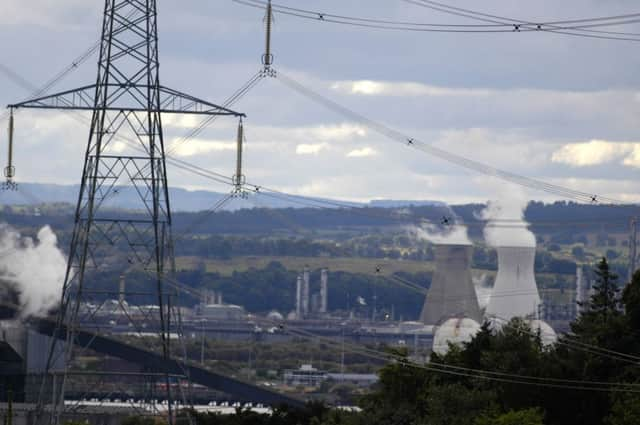Taxes and charges sealed Longannet’s fate


Unfortunately this was the intention of a policy designed to make it more expensive to connect to the national grid in Scotland.
Our announcement of the closure of Longannet last week was as a result of increasing costs from taxes and charges.
Advertisement
Hide AdAdvertisement
Hide AdCarbon taxes introduced in 2013 to phase out coal generation are affecting power stations across the UK such as Ferry Bridge in Yorkshire. Since 2013 the price of carbon has been increasing and next year Longannet’s carbon tax bill would have been over £150 million.
The second factor is transmission charging. This year for Longannet the annual charge to connect to the Grid is £40 million. From April 2016, instead of increasing to £50 million, it would remain at £40 million, following the ‘review’ of the charges. So in reality, not a £10 million saving as Brian Wilson suggests, just a temporary respite from the situation worsening. It would be £50 million by 2017.
The locational transmission charge is an unfair and an additional cost on top of carbon taxes that makes the future operation of Longannet uneconomic.
The system to charge power stations for connecting to the national grid based on their location was designed by the UK Government over 10 years ago. These charges are actively discouraging investment in new power stations in Scotland. No power company is currently planning new thermal generation in Scotland, not because we lack the locations or the skill-base to develop and build new plant but because of punitive transmission charging.
If Scotland becomes a net importer of electricity, it will be the result of these unfair geographical charges.
The Renewables Obligation was designed when Brian Wilson was in Government, not to offset transmission charges, but to encourage energy companies to invest in wind power. And we have.
Our investment in renewables is over £1.5 billion in the last decade, supporting thousands of jobs and reducing the UK’s carbon footprint. Brian Wilson claims we are the biggest ‘beneficiary’ of renewables. In reality, we are the biggest investor.
As an ex-energy minister Brian Wilson will know that facts are essential in our industry. That’s why it’s important to remember that the sub-sea Western Link between Scotland and England will have a capacity of just over 2GW in each direction. Meaning Scotland can export renewable energy to the south as well as importing from England.
Advertisement
Hide AdAdvertisement
Hide AdWith stations closing across the country continuous investment has never been more important. Brian Wilson questioned ScottishPower’s spending plans. Let’s be clear, ScottishPower’s annual investment has doubled since integration with Iberdrola with over £7 billion invested in the UK since 2007.
In the next eight years we are spending a further £8 billion. That’s over £2 million a day. We are currently building seven onshore windfarms in Scotland with a combined capacity of over 500MW, we are upgrading over 11,000km of power lines by the end of the decade and are planning one of the world’s largest offshore windfarms in the North Sea.
But at the moment our priority is the people at Longannet. We will work tirelessly to ensure that our 236 skilled workers at the station get the best outcome possible when the plant closes. We will help those who want to leave, and we will find roles for those who want to stay. Working with the newly created task force, we will do all that we can to minimise the impact of Longannet’s closure on the wider Fife and Central Scotland regions.
• Keith Anderson is chief corporate officer with ScottishPower